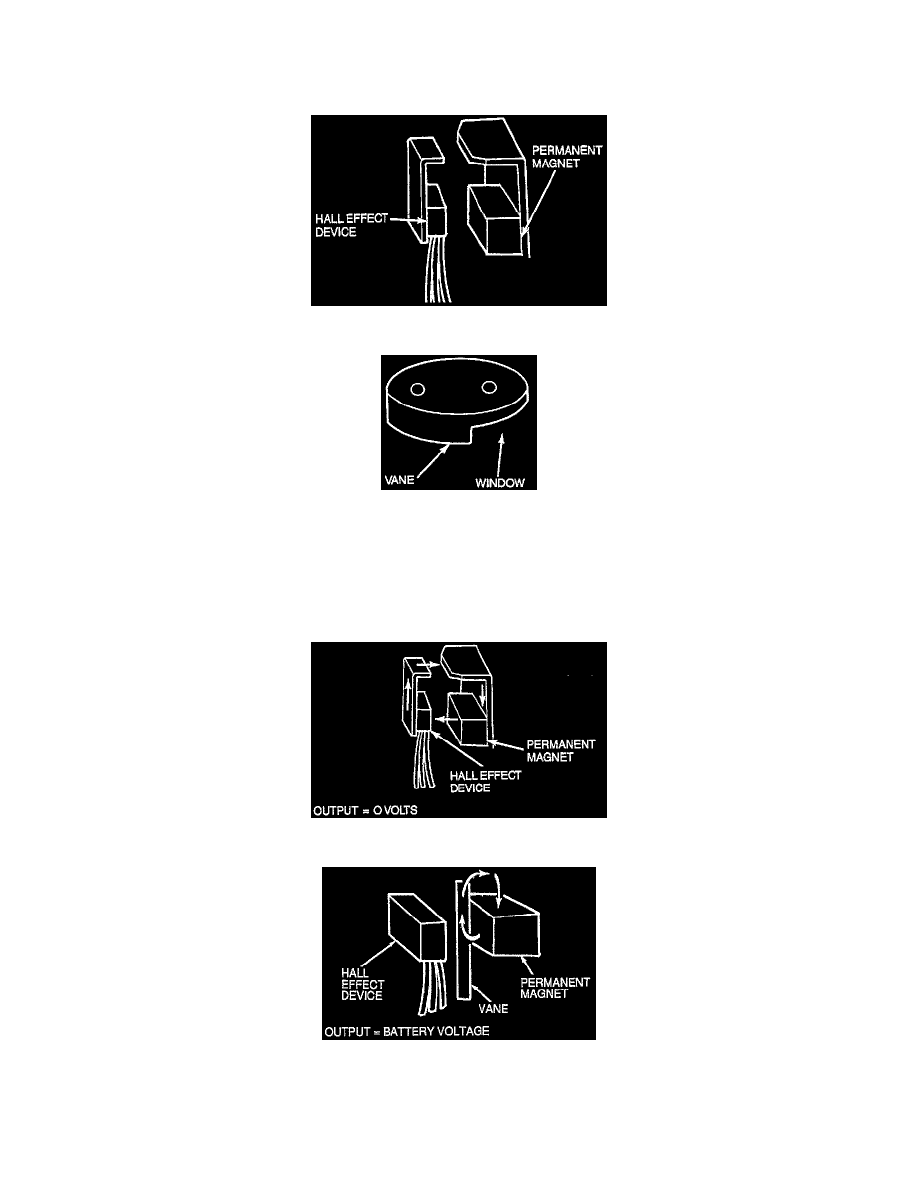Taurus V6-195 3.2L DOHC SHO (1994)

Hall Effect Sensor: Description and Operation
EI-Low Data Rate
CAMSHAFT/CRANKSHAFT SENSORS
Hall Effect Device
Rotary Vane Cup-CMP Sensor
The camshaft position and crankshaft position sensors used are digital hall devices. The camshaft position sensor is located on the rear cylinder
head close to cylinder 1. A rotary vane cup (or wheel), made of ferrous metal, is used to trigger the hall effect switch located in the sensor. The
camshaft cup has one tooth and is driven by the camshaft. The signal from the camshaft position sensor has one positive-going edge once every
two crank revolutions (one cam revolution). The crankshaft cup has three teeth and the crankshaft position sensor generates three positive (PIP)
edges every revolution of the crankshaft.
Magnetic Flux Field
Hall Effect Device Response To Vane
When the window of the vane cup is between the magnet and hall effect device, a magnetic flux field is completed from the magnet through the
hall effect device and back to the magnet, the output signal will be low (zero volts). However, when the vane tooth moves into the gap between the
hall effect device and the magnet, the flux lines are shunted through the vane and back to the magnet and the output will change from a low to
